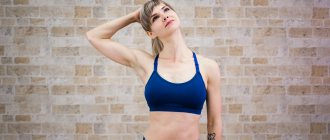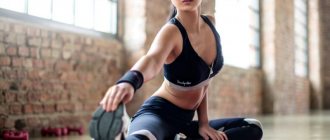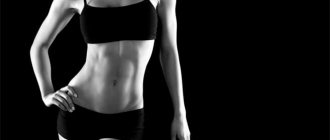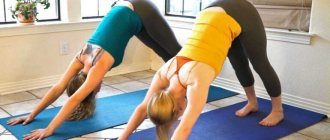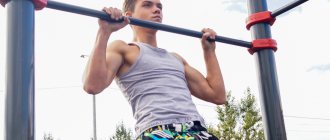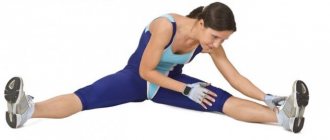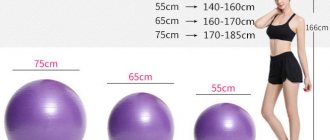The history of stretching does not have a precisely defined date that could be called the origin of this area of physical activity. According to some sources, movements similar to elements of modern stretching were performed in ancient Rome, they were used by gladiators before entering the arena. On the other hand, in search of the origins of modern stretching, you can go even deeper into the depths of history, comparing it with yoga, which is no less than four thousand years old.
However, if we consider a period of time closer to the present, then Sweden can be considered the ancestor of the modern stretching system, where this movement, as a separate type of training, began to emerge in the 50s of the last century.
Today we will talk about stretching. We will discuss the nuances of all options for performing exercises, and also provide several practical descriptions for each of them and discuss the effect of stretching on the body.
The benefits of stretching
It’s worth noting right away that sports professionals engage in stretching every day. Why? Because stretching helps to loosen the muscles and reduce pain in them after the work done. This in turn reduces the risk of injury. Maintaining muscle elasticity is a key factor in maintaining muscle health and ensuring continued progress. In the same way, stretching affects the ligamentous apparatus - it allows it to remain flexible and strong at the same time. Since all muscles are attached to bones in one way or another, stretching the muscles also loads them, thereby increasing the mineral density of the bones, which effectively prevents the risk of fractures and osteoporosis. All of the above factors allow you to maintain maximum joint mobility and adequate posture, and joints and posture in fitness are everything to us. Among other things, stretching has a stimulating effect on small arteries and veins, which subsequently improves blood flow in the trained muscles and lymph circulation. Also, stretching's energy consumption is comparable to moderate cardio training and helps to efficiently burn calories.
Experienced fitness professionals resort to daily stretching of one or another muscle group also because stretching muscle fibers increases the expression of receptor genes for a number of anabolic hormones, thereby increasing the potential for further progress.
What is stretching and why is it needed?
Stretching is a type of exercise aimed at increasing muscle elasticity and strengthening tendons and joints.
Stretching exercises are useful to perform after cardio exercises and strength training, and you can do them between sets. It's also a good idea to work on stretching after a light warm-up before you start training.
After training, stretching exercises will be very beneficial for your body. After stretching, muscles relax and recover faster. Stretching before exercise increases muscle elasticity, thus preventing injury.
Types of stretching
There are a huge number of stretching options, but all movements performed during different types of stretching can be divided into three main types - static, dynamic and ballistic. During static stretching, the practitioner assumes a certain position, which is held for 15 to 60 seconds. This type of exercise most effectively develops flexibility. This type of stretching was once called stretching. Dynamic stretching involves a slow movement, ending with holding a static position at the end point of the amplitude. Ballistic stretching consists of swinging movements of the limbs, as well as flexion and extension of the body, which can be performed with a large amplitude.
Now we will analyze in more detail the main types of stretching, in which the above-mentioned movements will one way or another occur.
Static stretching
This type of stretching is divided into two subtypes - active and passive. With active static stretching, a muscle group is stretched due to the work of other muscle groups.
For example, stretching the deltoid region of the shoulder, in which the elbow of the working side is grabbed with the opposite hand. In the passive form of static stretching, a muscle group is stretched due to voluntary relaxation, body weight, or a partner.
Dynamic stretching
Just like static, this type of stretching is divided into active and passive subtypes. In the passive version, the stretched muscle is brought to its maximum stretched position, where it is subjected to additional stretching movements of small amplitude. Active dynamic stretching differs from passive stretching only in that the additional amplitude of stretching of a muscle group is achieved through contraction of antagonist muscles. For example, you stretch the front of your thigh by grabbing the toe of your working leg behind your back and additionally contracting the biceps of the thigh of the same leg. In this case, the quadriceps and hamstrings act as antagonists in relation to each other.
Antagonistic stretching
In essence, this is dynamically active stretching. The antagonistic stretching technique consists of voluntarily tensing the antagonist for 3-5 seconds, as a result of which the antagonist muscle relaxes for 10-15 seconds, and the cycle is repeated.
Muscle pairs that are antagonists
- Pectoral muscles - Rhomboid muscles (adductors of the scapula)
- Biceps brachii – Triceps brachii
- Abdominal muscles - Back extensors (lower back)
- Quadriceps - Biceps femoris muscle
- Gastrocnemius muscle - Muscles of the front surface of the leg
Agonistic stretching
With this type of stretching, the approach to the target muscle group includes, in addition to direct stretching, also static tension of the stretched muscles, where the tension phase lasts 3-5 seconds. After this, the muscle group should be quickly relaxed and brought back to its maximum stretched position.
PNF (Proprioceptive Neuromuscular Facilitation) method
The PNF method is similar to an agonistic type of stretching. The stretched muscle approach involves a phase of static tension lasting 3-5 seconds. However, in this case, the contraction occurs in an extended position, without shortening the working muscle group. This method allows you to improve not only elasticity, but also muscle strength.
Precautionary measures
If done incorrectly, loaded stretches can be dangerous, so use moderate weights, pay attention to the angle of the stretch, and abduct your limbs just enough to feel the stretch in the target muscle , but not in the joints or ligaments.
Additionally, stretching should be performed at the end of your workout. Performing it early, research shows, has a negative effect on its effectiveness .
One review in the Journal of Clinical Sports Medicine published the results of 20 studies that showed that vigorous stretching performed before exercise worsens performance. This was observed in terms of endurance, jump height, as well as jump strength and speed.
Thus, it is better to leave stretching for a later phase of training , when you finish off the muscles.
When to stretch
You can stretch anywhere and at any time. In the morning, you can perform short dynamic stretching in the form of exercises, and in the evening, use long-term static stretching for relaxation before bed. If you have a sedentary job, then during short breaks you simply need to stretch your muscles.
The muscles of the upper body can be stretched in the car or on public transport. As for the training process, it is imperative to include stretching both in the preparatory and final parts of the workout, where stretching exercises will play different roles. At the beginning of your workout, stretching will prepare your muscles for the work ahead by increasing blood flow, temperature and neuromuscular conduction in your chosen target group. Stretching in the final part of the workout will help reduce muscle pain after intense work, stretch and relax an actively contracting muscle group.
Beautiful posture, gait and no cellulite
Photo: pexels.com
Stretching helps to simultaneously strengthen and relax the muscles of the back, legs and pelvis, and this improves not only posture, but also gait, making it smoother and more confident. In addition, with the help of stretching you can get rid of cellulite on the stomach and thighs, but for this you will have to try hard - don’t be lazy and devote half an hour to training every day. Due to tension, muscle tone will become better and better each time, which will ultimately lead to improved blood circulation in the deep layers of the skin, making it smoother and more elastic. An excellent addition to training would be a course of wraps with warming cream and massage with a dry bamboo brush, which can be done 3-4 times a week.
The benefits of stretching are also recognized by nutritionists: slow physical exercise improves bowel function and metabolism - this makes it much easier for the body to burn excess calories and lose weight more actively, so if running long distances causes you nothing but disgust, try this alternative way.
How to do stretching correctly
The ideal stretching technique is fraught with a lot of nuances. Let's list the main tenets of stretching so that your stretching from the very first lessons is as productive as possible:
- While stretching, your breathing should be even and slow. Breathe deeply and don't hold your breath.
- In each exercise, maintain as stable a body position as possible.
- Do all poses that involve bending while exhaling. Come out of the bend and take a deep breath to stretch the muscles of the upper body - this will open your chest as much as possible.
- When stretching a particular muscle group, concentrate on it.
- Always stretch only to a certain characteristic sensation, which should be pleasant and accompanied by relaxation. Painful sensations indicate an excessive amplitude of stretching at a given time.
- It is better to stretch for less time, but often, than rarely and for a long time.
- Hold each stretch position for at least 10 seconds, gradually increasing the time interval to 30-45 seconds.
- Don't stretch too tight muscles without first doing a massage, which you can do yourself.
Stretch complex for the whole body
Let's give an example of a simple set of stretching exercises, with which you can work the main muscle groups of the whole body.
Stretch your upper body:
- Take a standing position with your feet apart.
- Bend your knees slightly.
- Bend your head forward and grab the back of your head with your hands.
- As you exhale, gently press your chin to your chest, pointing your elbows towards each other.
- At the end of the exhalation, hold the position for 10-15 seconds and resume even, deep breathing.
- Without changing the starting position, put your hands behind your back and lock them together.
- Fill your chest as much as possible with a deep breath and move your arms as far back and up as possible.
- Return to the starting position and clasp your head with one of your hands on the side of the opposite ear.
- As you exhale, gently move your head toward the shoulder of your working side.
- Switch sides.
- Return to the starting position and bend your knees a little more.
- Bend slightly forward and clasp your hands under your knees.
- As you exhale, smoothly lift your body up, without releasing the grip under your knees.
- Return to the starting position, and with one of your hands grab your opposite elbow, pressing it to your chest.
- Switch sides.
With this complex we have stretched the upper body well, now we can move on to the lower part:
- Take a standing position with your feet apart.
- With one of your hands behind your back, grab the toe of your foot on the same side and press your heel to your buttock.
- Switch sides.
- From the starting position, place one of your legs forward with your toes facing you.
- As you exhale, gently bend toward your extended leg and grab your toes.
- Hold the position for 10-15 seconds, then return to the starting position and switch sides.
Let's move on to the final complex:
- Assume a plank position with your arms straight.
- Leaning on your toes, place your feet as close to each other as possible.
- Place one of your feet with your toe on the opposite heel and smoothly move your body back, stretching your calf muscle.
- Switch sides.
- From the plank position, move into a forward lunge position on one of your legs.
- As you exhale, smoothly tilt your body forward along the medial side of your front leg, and fix the position on your elbows.
- The elbow can be placed behind the foot and fixed on the floor on the lateral side of the ankle.
- Hold the position for 10-15 seconds and change sides.
Conclusion
To do quality stretching, you don’t have to be in excellent physical shape or have any special skills. Everyone can learn to stretch competently, regardless of their initial level of flexibility and sports experience. You can stretch at any time and place convenient for you. In addition to relaxation and the ability to restore muscle tone, regular stretching brings a lot of benefits: it develops coordination, increases the working range of movements, has a beneficial effect on the nervous and immune systems, and also increases longevity in sports. Stretching for at least 15 minutes a day and enjoy excellent health, training productivity and constant progress.
Articles on our website are presented for educational and informational purposes only. We do not recommend using article materials as medical advice. If you decide to take dietary supplements or make fundamental changes to your diet, first consult with a specialist.
Proofreader and editor: Farida Seidova
Contraindications
You cannot do stretching exercises in the following cases:
- You have a spinal injury.
- If there are fractures or cracks in the bones.
- In case of lower back diseases.
- For joint inflammation.
- With high blood pressure.
It is forbidden to stretch muscles if you have not done a good warm-up beforehand.
For beginners, it is better to spend several lessons with a trainer. Children should only do stretching under the supervision of a specialist. Exercising during pregnancy is not prohibited, but you need to carefully monitor your well-being, and at the slightest suspicion of danger, stop training and immediately consult a doctor.
Girls and women should also be careful when stretching during their cycle.




